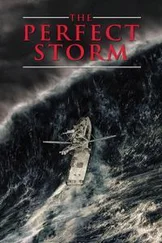The entire plan hinged on airpower because there was no way to walk down there fast enough to catch the enemy by surprise. Air was now conducted by the 101st Aviation Wing, which had arrived in country only a couple of months earlier, but they’d already crashed so many helicopters that they were reluctant to fly into any landing zones that hadn’t been cleared. Kearney was going to use the same two landing zones that he’d used on Rock Avalanche — code-named Grant and Cubs — but they were just small bare patches on the sides of mountains. If a rotor blade so much as clipped a treetop, the helicopter would crash.
The men of Second Platoon are down at the KOP clustered behind the blast wall packing and repacking their gear for the mission: ammo, radio batteries, water, everything you’d need for a forty-eight-hour Armageddon. Yaka Chine is crawling with insurgents; they’ve got no farther place to go and it’s an almost guaranteed firefight. Almost guaranteed casualties. Mace walks up carrying a crate of Claymore mines, which are set up around any static position and detonate outward rather than upward to blunt any ground attack. The men are discussing how much water to bring and how much sleeping gear they’ll need and whether to use small assault packs or full rucks. After a while Gillespie wanders up and announces that there’s limited space on the birds, so Solowksi won’t be going — though I will. It’s not exactly that Solowski’s getting pulled for me, but that’s the result. That means not only will the gun team be down a man but the others will have to carry that much more ammo. Later I catch Gillespie by himself and tell him I’d be happy to carry 500 rounds if that would make things easier.
“Let me talk to the gun team,” he says. “You might have to.”
The medic gives me extra rehydration salts and an IV bag in case I get hit. I’ve already got a tourniquet and an Israeli bandage in my vest, and a pack of Kerlix. In my chest my heart is slamming. There are times when all of this — the helicopters and the guns and the Afghans and the steep beautiful mountains — just feels like some awesome and dramatic game. And then there are moments when you suddenly understand how real it all is: no way to control what happens next, no way to rewind things back to a better place if it all goes wrong. There’s intel about four SA-18 rockets in the valley, the kind that track heat signatures and blow aircraft out of the sky. We could lift off from the KOP and all be dead in minutes. I don’t have to go on this mission, I don’t even have to be in this valley. Right now I have everything — my life, my safety, my friends and family back home — and I might be allowed one moment of regret before those things are taken from me. One moment of crazy downward acceleration in a Chinook; one moment of dirt unzipping toward me faster than I can get out of its way. “The quick chaotic bundling of a man into eternity,” as Melville called it; the last impossible phase shift from being a person to being nothing at all.
I finish packing my gear. The stress is getting to everyone and things are noticeably strange. The men are creeping around the KOP trying to avoid Bobby and Jones or lying inert on their bunks as if they’re in some kind of morgue for the semiconscious. I watch one guy pull out his 9 mil and put it to another man’s forehead. Right between the eyes but it isn’t cocked. It’s tempting to calm myself with the idea that everything is in God’s hands, but I’m the one deciding whether or not to get on the helicopter — not God — so it’s hard to see what He has to do with it. The other men don’t have a choice so they’re spared that particular torment, though of course they have others. Either way, this will be settled — done with, nothing more to worry about — in forty-eight hours. That’s the closest you’re going to get to reassurance without grasping at some kind of religious help. God let Restrepo die and Rougle die and forty other guys die in this valley — not to mention dozens of civilians — so as a source of comfort He’s not that tempting. Maybe O’Byrne had it right: prayers don’t get answered because God isn’t even in this valley.
Across the battalion units are getting ready for the handoff and trying to create enough white space so the new guys don’t get killed as soon as they get there. The biggest effort is happening about ten miles to the north in the Waygal Valley, where Chosen Company will simultaneously abandon Outpost Bella and build a new one in the town of Wanat. Bella was the sister base to Ranch House, which almost got overrun the previous August, and after the Americans abandoned Ranch House it was only a matter of time before Bella went as well. There was no passable road up to Bella so everything had to come in by air, and the mountains were so high and steep that the Chinooks had a hard time even dropping off sling loads. They can’t abandon the Waygal altogether, though, because it was a major infiltration route for fighters moving from sanctuaries in Pakistan toward Kabul and the interior. The enemy knew Bella was being abandoned, and there was intel that a force of two hundred fighters were going to launch an attack in order to make it appear as if they’d actually driven the Americans out.
Within hours of pulling out of Bella, Chosen Company’s Second Platoon was going to convoy the eight kilometers from Blessing to the town of Wanat to build a permanent base next to the police station and the district center. They would be going home in less than two weeks, and building the outpost would be their last mission in Afghanistan. They had already sent most of their gear back to Vicenza. A spot for the base had been picked out in a field just south of the town, near the intersection of two rivers that had been bridged the year before by 10th Mountain. It was a crucial piece of terrain that The Rock had spent nearly a year negotiating for; unfortunately, that also gave the enemy plenty of time to prepare. The base would be named Combat Outpost Kahler, after a platoon sergeant who had been killed by an Afghan security guard in a highly suspect friendly-fire incident six months earlier.
There was a bad feeling about the mission from the beginning. Days beforehand someone had written “Wanat: the movie” on the mission board, and the men were joking about which actors would play them. An Afghan heavy equipment contractor never showed up on the job, and the Americans’ one Bobcat had a bulldozer blade but no bucket. That meant it could only fill Hescos to a height of about four feet; everything else would have to be done by hand. Men were spotted moving along the upper ridges but couldn’t be killed because they weren’t carrying weapons, and on the third night an estimated two hundred foreign and local fighters managed to move into positions around Outpost Kahler. They set up heavy machine guns on the ridges and put a Dishka in a nearby building, aimed point-blank into the base, and riddled the bazaar with more fighters who were mobile inside the innumerable stalls and alleyways. Finally they positioned cadres of men whose job it was to run forward and breach the wire, or die trying.
The Taliban plan was to suppress the base with massive firepower, breach the wire, and drag off dead and wounded American soldiers. There was a small outpost a hundred yards outside the base, and that was particularly vulnerable to being overrun. The Taliban knew that once they were close in they couldn’t be hit by artillery, and that Apaches would take at least an hour to get there. That meant it would be a fair fight until then. With luck they could get inside the wire, kill groups of soldiers as their guns jammed, and possibly take over the entire base. It was exactly the nightmare scenario that the men at Restrepo went to sleep dreading; it was exactly the nightmare scenario that few Americans back home even understood could happen. The fact that it didn’t happen at Wanat was nothing short of a miracle.
Читать дальше
Конец ознакомительного отрывка
Купить книгу












